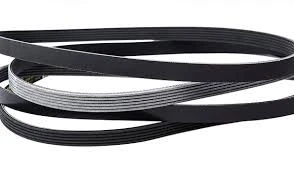- Arabic
- French
- Russian
- Spanish
- Portuguese
- Turkish
- Armenian
- English
- Albanian
- Amharic
- Azerbaijani
- Basque
- Belarusian
- Bengali
- Bosnian
- Bulgarian
- Catalan
- Cebuano
- Corsican
- Croatian
- Czech
- Danish
- Dutch
- Afrikaans
- Esperanto
- Estonian
- Finnish
- Frisian
- Galician
- Georgian
- German
- Greek
- Gujarati
- Haitian Creole
- hausa
- hawaiian
- Hebrew
- Hindi
- Miao
- Hungarian
- Icelandic
- igbo
- Indonesian
- irish
- Italian
- Japanese
- Javanese
- Kannada
- kazakh
- Khmer
- Rwandese
- Korean
- Kurdish
- Kyrgyz
- Lao
- Latin
- Latvian
- Lithuanian
- Luxembourgish
- Macedonian
- Malgashi
- Malay
- Malayalam
- Maltese
- Maori
- Marathi
- Mongolian
- Myanmar
- Nepali
- Norwegian
- Norwegian
- Occitan
- Pashto
- Persian
- Polish
- Punjabi
- Romanian
- Samoan
- Scottish Gaelic
- Serbian
- Sesotho
- Shona
- Sindhi
- Sinhala
- Slovak
- Slovenian
- Somali
- Sundanese
- Swahili
- Swedish
- Tagalog
- Tajik
- Tamil
- Tatar
- Telugu
- Thai
- Turkmen
- Ukrainian
- Urdu
- Uighur
- Uzbek
- Vietnamese
- Welsh
- Bantu
- Yiddish
- Yoruba
- Zulu
Aug . 13, 2024 01:36 Back to list
Choosing the Right Engine Fan Belt for Optimal Performance and Longevity in Your Vehicle
Understanding the Importance of the Engine Fan Belt
The engine fan belt, also known as the serpentine belt or accessory drive belt, plays a vital role in the efficient functioning of vehicle engines. This crucial component is a long rubber belt that connects various engine accessories to the crankshaft, allowing them to operate smoothly. Understanding the function and maintenance of the engine fan belt can help vehicle owners ensure the longevity of their cars and prevent costly repairs.
Function of the Engine Fan Belt
Primarily, the engine fan belt drives the engine's cooling fan, which is essential for maintaining optimal engine temperature. By keeping the engine cool, the fan belt prevents overheating, which can lead to severe engine damage. Additionally, the fan belt powers various components, such as the alternator, power steering pump, air conditioning compressor, and water pump. By distributing power from the engine to these accessories, the fan belt ensures that the vehicle operates efficiently and effectively.
Signs of a Failing Engine Fan Belt
Like any other component in an automobile, the engine fan belt is subject to wear and tear over time. Recognizing the signs of a failing belt is crucial for preventing potential breakdowns. Common indicators of a worn-out fan belt include
1. Squeaking or chirping noises A loose or damaged belt may produce an irritating squeak or chirp when the engine is running. This noise often signifies that the belt needs adjustment or replacement. 2. Visible cracks or fraying Inspecting the belt for visible signs of wear, such as cracks, fraying, or splitting, can help detect problems early. If any damage is evident, it is essential to replace the belt promptly.
engine fan belt

3. Engine overheating If the cooling fan is not functioning properly due to a defective fan belt, the engine may overheat, causing extensive damage. Regularly monitoring engine temperature can help identify issues early.
4. Loss of power steering or electrical issues If you notice a sudden loss of power steering or electrical accessories not functioning correctly, it could indicate that the fan belt has slipped or broken.
Maintenance and Replacement
Regular inspection and maintenance of the engine fan belt can significantly extend its lifespan and prevent unexpected vehicle issues. Automotive experts recommend checking the fan belt every few months for wear, especially if the vehicle is older or has high mileage. Pay attention to any unusual noises or performance issues that may indicate belt problems.
The typical lifespan of a fan belt ranges from 50,000 to 100,000 miles, depending on factors such as driving conditions and usage. If a belt is showing signs of wear or has reached its mileage limit, it is best to replace it. Installing a new fan belt is usually a straightforward process, but if you are not familiar with engine components, seeking the assistance of a professional mechanic is advisable.
Conclusion
The engine fan belt may seem like a minor component, but its role in maintaining engine efficiency and performance is significant. By understanding its function, recognizing signs of wear, and adhering to regular maintenance practices, vehicle owners can ensure their automobiles run smoothly for years to come. Taking proactive steps to care for the engine fan belt ultimately contributes to overall vehicle reliability, safety, and longevity.
-
Korean Auto Parts Timing Belt 24312-37500 For Hyundai/Kia
NewsMar.07,2025
-
7PK2300 90916-T2024 RIBBED BELT POLY V BELT PK BELT
NewsMar.07,2025
-
Chinese Auto Belt Factory 310-2M-22 For BMW/Mercedes-Benz
NewsMar.07,2025
-
Chinese Auto Belt Factory 310-2M-22 For BMW/Mercedes-Benz
NewsMar.07,2025
-
90916-02660 PK Belt 6PK1680 For Toyota
NewsMar.07,2025
-
drive belt serpentine belt
NewsMar.07,2025

